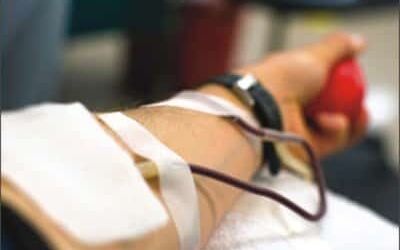Everyday, thousands of people undergoing major surgeries need blood transfusion. Many people suffering from various conditions like haemophilia (genetic disease that impair the body’s ability to control blood clotting), dengue, severe anaemia, blood cancer, thalaessemia need blood transfusion.
On an average, 3 to 3.5 lakh bags of blood are needed in our country every year. There is always strict advice to transfuse safe blood. But from where these amount of blood will come? Blood is not produced in a factory and yet there is no alternative source for blood. The only source of blood is human body.
Usually, blood from relative is encouraged for transfusion. But if a healthy relative of the same blood group is not available, blood from any healthy voluntary donor of that group may be transfused. In our country, people usually depend on the organisations like Sandhani, Redcresent, Badhon, Quantam etc. for safe and fresh blood. We should remember that these organisations or institutions do not manufacture blood. They are only the media to collect blood from healthy voluntary donors to provide it to the needy people. The more the voluntary donor, the more these organisations will make blood available.
Here the question comes — who can donate blood? Any person within the age group of 18-60 years with a body weight as minimum 45 kg for female and 48 kg for male and having a general well-health is an eligible blood donor. Healthy means that you feel well and can perform normal activities; your blood pressure, pulse, body temperature are normal; and you are free from any blood boarn diseases such as malaria, syphilis, gonorrhoea, hepatitis B, C, AIDS, haemophilia etc.
You may have chronic conditions like diabetes or high blood pressure; but in these cases, healthy means — you are being treated and the condition is under control. Such healthy people can donate one bag (350-450 ml) blood safely every 4 months.
After donating blood, the donor should take rest for 15-20 minutes. Routine work is absolutely fine after the initial rest. Rigorous physical work should be avoided for few hours. After resting for a while a donor should be given some liquid (fluid) to drink, such as water, ORS, milk or fruit juice. The donor needs no special diet other than a routine balanced diet. The body replaces blood volume or plasma within 24 hours.
It is very unfortunate that voluntary blood donation is still not so popular in our country. This is due to the lack of proper awareness, social movement, irrational fear and superstitions about donating blood. Some organisations are working in this field but still the number of voluntary blood donor is not keeping pace with the yearly requirement of blood.
In a study conducted by Sandhani, Dhaka Medical College Unit, it was seen that 62 percent of the population were unaware of the blood-transmitted diseases, 53 percent of people did not even know what their blood group was; 66 percent admitted that their knowledge about blood donation was not sufficient.
For the lack of adequate voluntary donors, many patients are being compelled to buy blood from professional blood donors. Such donors are more likely to carry dangerous infections and their blood is more likely to be of lower standard, as they tend to donate, better to say, trade more frequently.
In Bangladesh, mostly drug addicts sell their blood to get money to buy drugs for addiction. Usually they are under-nourished, having less haemoglobin in their blood. They also suffer from various blood transmissible diseases. So, the patient who is getting that blood, though initially may be benefited, is in risk of having many diseases.
In a research conducted in our country, 22 percent of the professional donor was found having Syphilis and 29 percent having Hepatitis-B. A study conducted in BSMMU showed that 60.1 percent of the patients suffered from hepatitis, who got transmitted unscreened blood from professional donors.
Again, many patients fail to get any kind of blood, not from voluntary donors, not from professional donors even. Voluntary donors’ safe blood and professionals’ unsafe blood collectively fail to fulfill the yearly requirements of Bangladesh.
If only 1% of the population donate blood once a year (though a healthy donor can donate blood 3 times a year safely), the yearly collection stands a satisfactory number which may fulfil the requirement smoothly.
Mathematically it is an easy task but it does not happen in reality. We all need come forward to save thousands of lives dying due to the shortage of blood.
Dr Muntasir Maruf
Source: The Daily Star, February 27, 2010





 Test allows men to check their sperm-count at home
Test allows men to check their sperm-count at home
Leave a Reply